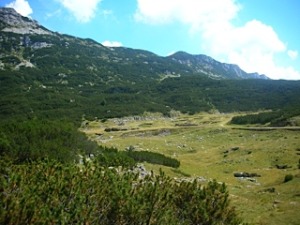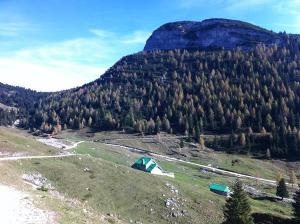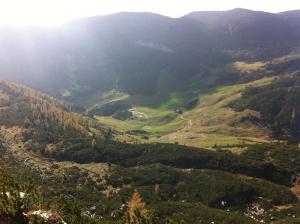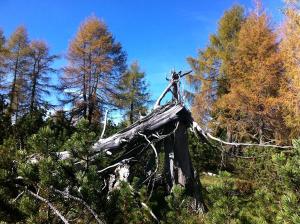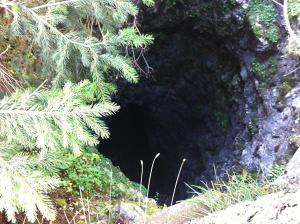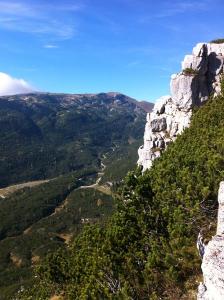
off
Galmarara – Malga Portule
“We arrived to a malga where, in the heart of winter, I had found shelter for the night when I was a boy and I ran away from home for a slap I felt I did not deserve. That night there were certainly more than twenty degrees below zero and the wind and snow whipped the roof and crept between the beams. I lit the fire but I could not sleep; the little firewood was over very quickly and then I burned the bench and the table not to remain frozen. By the light of the fire, I read Conrad’s Typhoon that I had brought with me inside the backpack.”
“Later, in a lonely and sheltered valley among the great meadows, and in the silence of the mountain that was waiting for the snow, there was the malga made of trunks where I had spent my first vacation in the summer of 1953. My first book was recently released. A primary-school classmate of mine, who led the malga, a municipal property that he had rented, hosted me. Early in the morning, at sunrise, I went to unexpected places to look for my friends shepherds who followed the herds (…) At about ten o’ clock I returned to the dairy to prepare food for the herdsmen who hosted me.”
From “Sentieri sotto la neve” (Paths under the snow), “I miei sentieri sotto la neve” (My paths under the snow)
The context
The first “malga” (the typical Alpine dairy hut) is that of Galmarara, at an altitude of 1,611 metres in the valley with the same name. The year is 1935, when the writer was 14 years old. This can be deduced from the fact that this year a large aurora borealis could be seen also over our mountains, the very next night to the one described in the short story.
The young Rigoni Stern had gone to a match of ice hockey when he saw the northern sky became fire and was convinced that he had burned down, with the fire left on, the malga and the entire forest. In the quoted story the writer also describes Malga Portule (1,713 m), where he spent his first holiday to live the herdsman’s life. When he returned home, after a fortnight, he stank of smoke, resin, manure, whey, wild animal, and his wife made him undress in the hallway and sit in the bathroom, before welcoming him home.
In that area Rigoni Stern often went hunting with his father in law Toni.
The route
You reach Malga Galmarara by car, leaving the state road of the Val d’Assa shortly past the former Osteria alla Cut and going right along the old military road for about 8 kilometres. From the “malga” (mountain hut, 1,611 m) climb up the rocky slope of Mount Zoviello (CAI trail 830) to the crossing point to the valley of Portule (1,854 m), after passing the Busa del Molton and the mountain hut with the same name. So begins a descent that reaches the fork of Bivio dei Monumenti (1,787 m), where the road, curving to the left, goes towards Cima Portule (1,937 m), the junction of Cima Portule’s itinerary; on the west side of the valley there is Malga Portule, cited above.
From the junction, continuing instead to the north / north-east along the Kaiser Karl Strasse (where Mario picked up the tip of his mountain stick, mentioned at the end of “Sentieri sotto la neve”), and leaving on the left the detour to Casara Trentin (where the setting of the short story “Un pastore di nome Carlo” – A shepherd named Carlo, in “Sentieri sotto la neve” is), you reach the junction of Campo Gallina (m. 1,876), where you can visit important evidences (barracks, field hospital, cistern, gun embrasure, church, cemetery) of what was once one of the main Austrian logistics centres of the Great War. Continuing the climb you go beyond the panoramic saddle at an altitude of 2,055 metres and you get to Bivio Italia (1,987 m, junction to Cima Dodici, with its 2,336 metres the highest peak of the Asiago Plateau). From here, always following the path 830 to the south and touching the Corno di Campo Verde and the Bivacco Tre Fontane, in one and a half hour you return to Galmarara. The itinerary is not difficult but it requires more than five hours of walking, without considering possible stops. You can also travel by mountain bike.

